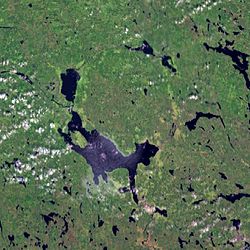This article needs additional citations for verification .(February 2018) |



An impact crater lake is a lake inside a depression caused by the impact of a meteor. It is also known as an annular lake in cases where the water body is shaped like a ring, as many impact crater lakes are.